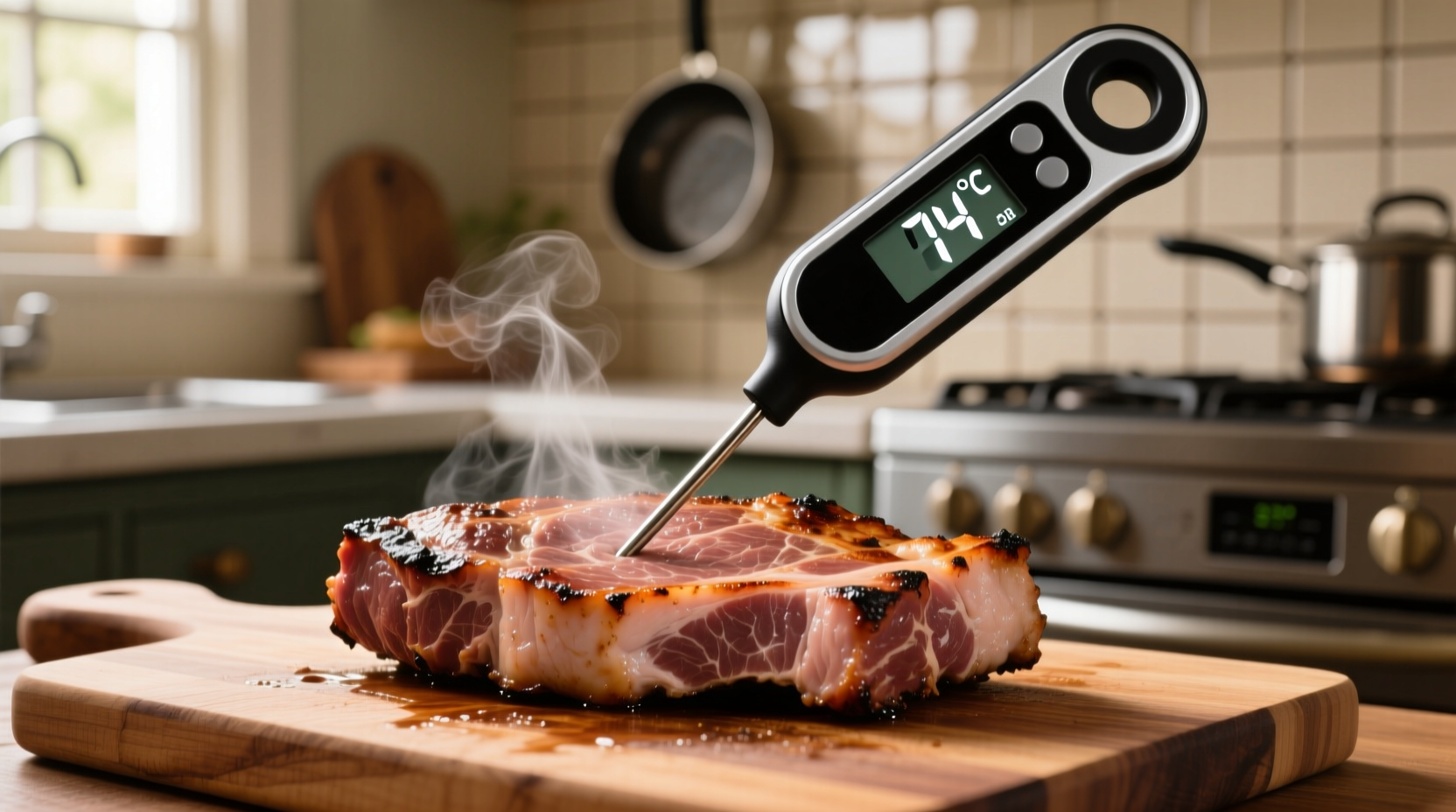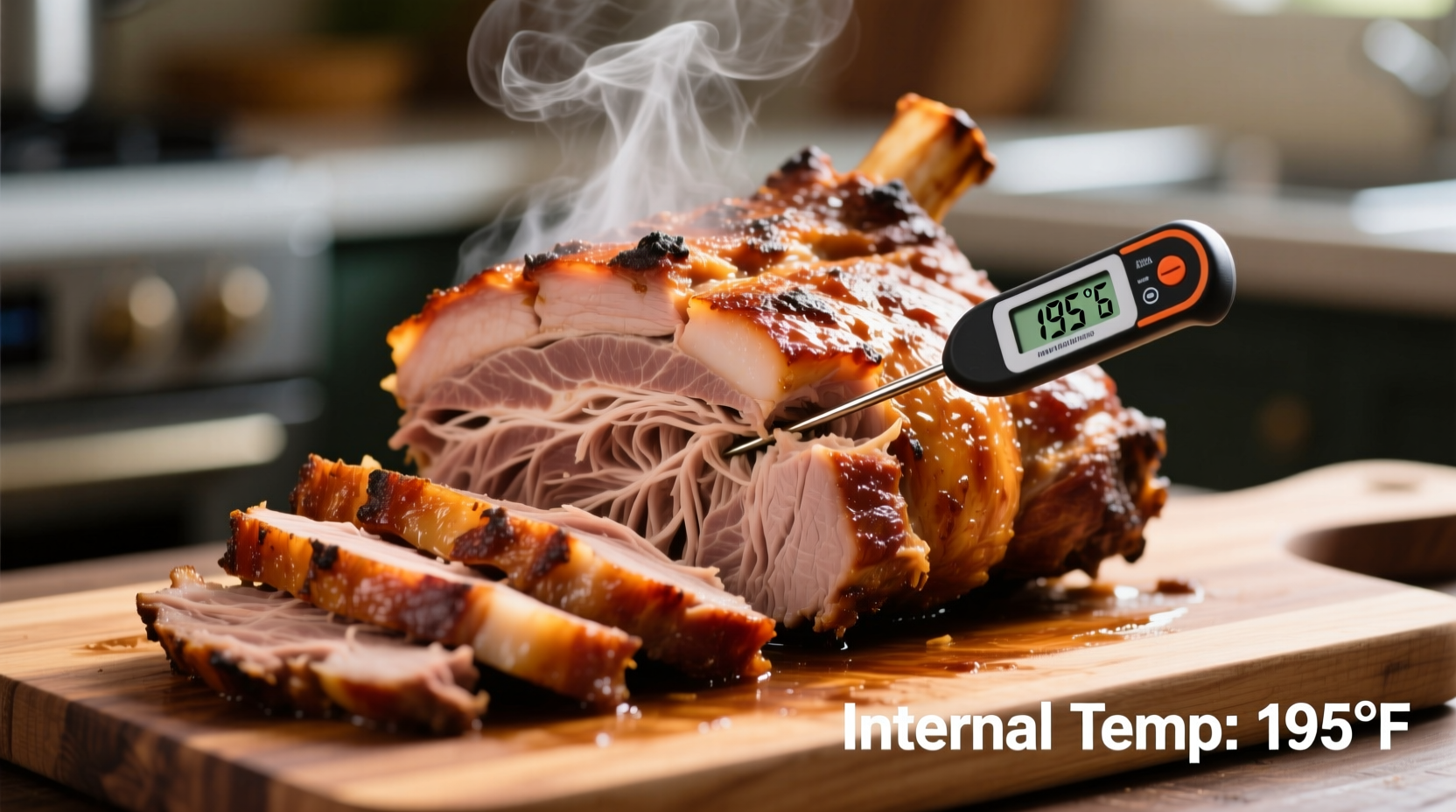Confused about pork cooking temperatures? You're not alone. Many home cooks still follow outdated guidelines that lead to overcooked, dry pork. The good news is modern food safety standards have evolved, allowing you to enjoy perfectly cooked, juicy pork while keeping your family safe. This guide delivers precise temperature recommendations backed by food safety experts, plus practical techniques to ensure perfect results every time.
Why Pork Temperature Matters More Than You Think
Understanding proper pork cooking temperatures isn't just about doneness—it's critical for food safety and texture. Trichinosis concerns once required cooking pork to 160°F (71°C), but decades of improved farming practices have made this parasite virtually nonexistent in commercial pork. The USDA updated its guidelines in 2011 based on extensive research from the National Pork Board and food safety experts.
When you cook pork to the recommended 145°F with proper resting time, you achieve three crucial outcomes:
- Destroys any potential pathogens including Salmonella and E. coli
- Maintains optimal moisture retention for juicy results
- Allows carryover cooking to complete the process safely
Pork Temperature Guide by Cut
Different pork cuts require slightly different approaches. Always measure temperature in the thickest part, avoiding bone or fat. Here's your complete reference guide:
| Pork Cut | Target Temperature | Rest Time | Visual Indicators |
|---|---|---|---|
| Pork tenderloin | 145°F (63°C) | 3 minutes | Slight pink center, juices run clear |
| Pork chops (boneless) | 145°F (63°C) | 3-5 minutes | Firm but yielding texture |
| Pork shoulder (pulled) | 195-205°F (90-96°C) | 15-30 minutes | Shreds easily with forks |
| Pork loin roast | 145°F (63°C) | 10-15 minutes | Slight pink center acceptable |
| Ground pork | 160°F (71°C) | None required | No pink remaining |
This temperature chart reflects current USDA Food Safety and Inspection Service standards, which you can verify in their official pork preparation guidelines. The updated recommendations resulted from collaborative research between the USDA and the National Pork Board, documented in their cooking techniques resource.
Mastering the Meat Thermometer: Your Essential Tool
Visual cues alone can't guarantee food safety. A reliable instant-read thermometer is non-negotiable for accurate results. Here's how to use it properly:
- Insert probe into the thickest part of meat, avoiding bone or fat pockets
- Wait 10-15 seconds for temperature to stabilize
- Check multiple spots in larger cuts
- Sanitize between readings when checking different meats
For roasts or thick cuts, leave an oven-safe thermometer in place during cooking. Digital thermometers with probes provide the most accurate readings for critical temperature zones. Remember that temperature continues rising 5-10 degrees during resting—this carryover cooking is why you remove pork from heat at 145°F rather than waiting for it to reach that temperature in the oven.

Avoid These Common Pork Temperature Mistakes
Even with the right information, these errors sabotage perfect pork:
- Testing too early: Opening the oven or grill frequently drops temperature and extends cooking time
- Skipping rest time: Cutting immediately releases precious juices—the 3-minute minimum allows proteins to reabsorb moisture
- Guessing doneness: Color isn't reliable—pork can appear pink at safe temperatures due to myoglobin
- Using dirty thermometers: Cross-contamination risk between raw and cooked meat
When Visual Cues Complement Temperature Readings
While thermometers provide definitive safety assurance, these visual indicators confirm proper cooking:
- Juices run clear rather than pink
- Meat feels firm but yields slightly when pressed
- Internal color ranges from pale pink to white (not gray)
Remember that some cuts like pork loin may retain a slight pink hue at 145°F—this doesn't indicate undercooking when the proper temperature has been reached. The American Meat Science Association confirms this pink color results from stable myoglobin compounds, not undercooked meat.
Special Considerations for Different Cooking Methods
Grilling, roasting, and sous vide each present unique temperature challenges:
- Grilling: Use two-zone setup to move pork away from direct heat if exterior browns too quickly
- Slow cooking: Pulled pork requires higher temperatures (195-205°F) to break down connective tissue
- Sous vide: Cook at 140°F for 1.5-2 hours, then sear for texture while maintaining safety
For holiday roasts or large cuts, the University of Minnesota Extension recommends allowing 15-20 minutes of rest time per pound to ensure even temperature distribution and maximum juiciness.
Food Safety Timeline: Pork Temperature Evolution
Pork cooking recommendations have evolved significantly based on improved food safety practices:
- Pre-1980s: 170°F recommended due to trichinosis concerns in backyard-raised pigs
- 1980s-2011: Reduced to 160°F as commercial farming improved
- 2011-Present: USDA adopts 145°F + 3-minute rest based on National Advisory Committee on Microbiological Criteria for Foods research
This evolution reflects decades of collaborative research between the USDA, CDC, and pork industry stakeholders, documented in the CDC's trichinellosis elimination program which has reduced cases by 90% since 1940.
Your Perfect Pork Checklist
Follow these steps for consistently safe, delicious results:
- Use a calibrated instant-read thermometer
- Cook fresh pork cuts to 145°F internally
- Remove from heat source at target temperature
- Rest for minimum 3 minutes (longer for roasts)
- Clean thermometer thoroughly after each use
Frequently Asked Questions
Is pork safe at 140 degrees? While 140°F is close to the recommended temperature, the USDA specifies 145°F as the minimum safe temperature for fresh pork. At 140°F, pork needs 12 minutes of rest time to achieve equivalent safety, which most home cooks don't allow.
Can I eat pork at 135 degrees? No—135°F falls below food safety standards. At this temperature, harmful bacteria may survive, especially in thicker cuts where heat distribution is uneven.
Why does my pork look pink at 145 degrees? The pink color comes from myoglobin, a protein that retains color even at safe temperatures. Nitrites in some marinades or natural compounds in the meat can also cause this effect. Temperature, not color, determines safety.
How long after reaching 145 degrees should I rest pork? The USDA mandates a minimum 3-minute rest period. For thicker cuts like roasts, rest 10-15 minutes to allow temperature equalization and juice redistribution.
Does pork temperature differ for pregnant women or children? The USDA maintains the same 145°F standard for all populations. Vulnerable groups should avoid raw or undercooked meats generally, but the standard provides adequate safety margin when followed correctly.











 浙公网安备
33010002000092号
浙公网安备
33010002000092号 浙B2-20120091-4
浙B2-20120091-4